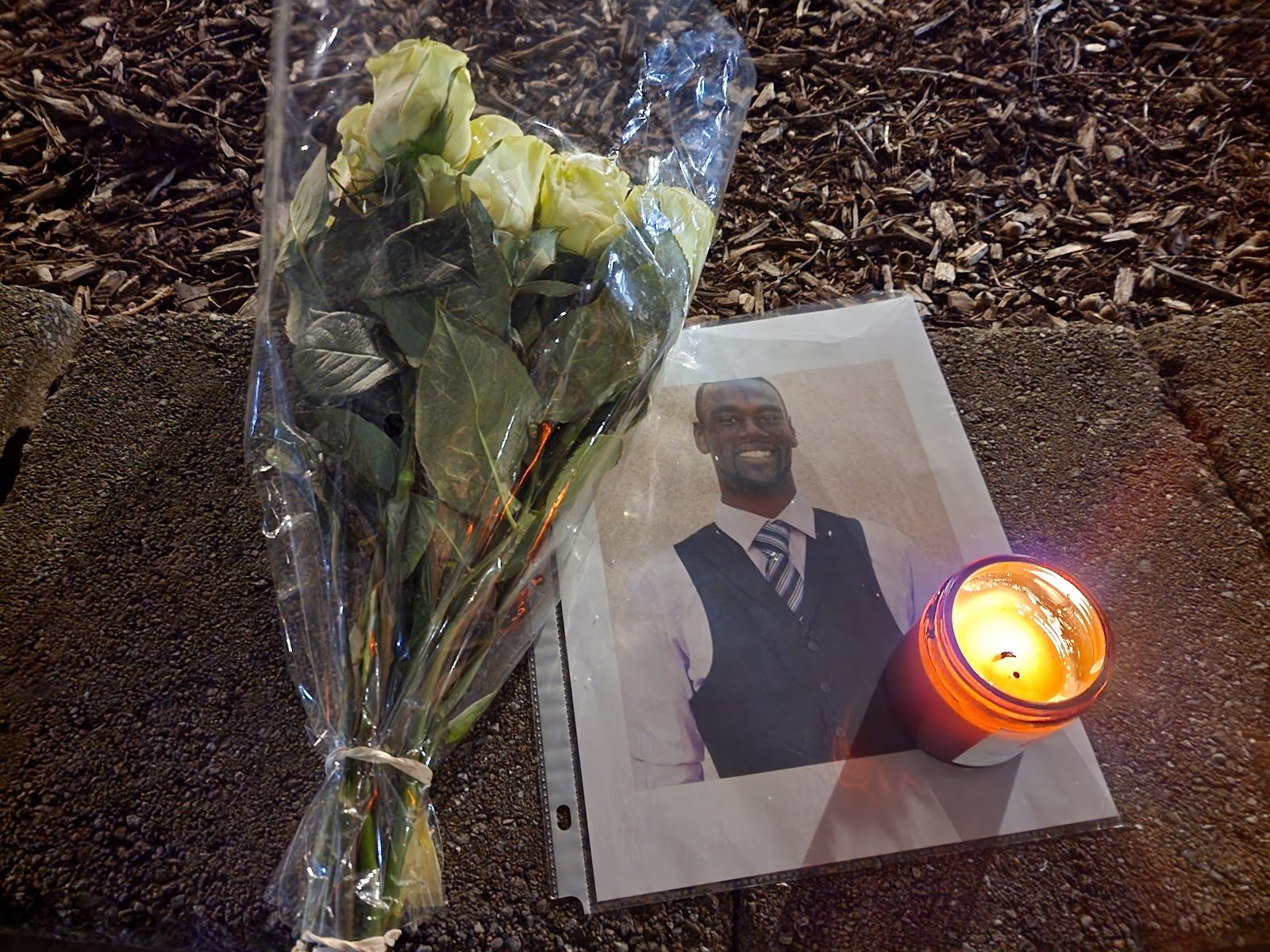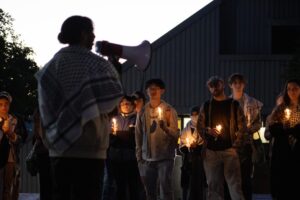Georgetown students held a vigil in Red Square on Feb. 5 to honor the life of Tyre Nichols, a 29-year-old Black man who was beaten to death by police in Memphis last month. Amid the wind and cold, dozens of students gathered at 6 p.m. to grieve his death and commemorate his life as a community.
“I couldn’t do nothing. I knew I wasn’t the only one grieving,” Kessley Janvier (COL ’25), who organized the vigil, said in an interview with the Voice after the event. “I don’t want to say that this killing hit different. I feel like we are in a cycle of, ‘Oh god, not another one.’ But it was through dealing with feelings of numbness, and then anger, and then grief, that the idea of a vigil came to me.”
Campus Ministry provided candles that were distributed to all attendees of the vigil. In a short speech, Janvier talked about how Nichols was a father, a son, and a friend. She referenced the words of those who had known him, describing him as a gentle and beautiful soul who loved to skateboard.
While it was Nichols’ death at the hands of the police that brought the community together, Janvier said that she wanted to focus on Nichols’ life instead of politicizing his death.
“It was important for me to honor him as an individual, instead of just someone who died at the hands of the police,” she said.
The vigil’s location in Red Square was picked intentionally by Janvier. “I chose to hold the vigil in Red Square because Tyre Nichols liked to skate,” Janvier said. “I don’t know how to skate, but Red Square feels like a place you could skate in.”
Reverend Ebony Grisom from the Protestant Ministry led the crowd in a short prayer that emphasized the importance of showing love and compassion to one another. This was followed by Lukas Soloman (COL ’26) reading “The Tradition” by Jericho Brown, a poem about the social injustices that the Black community continues to face. Attendees then observed a period of silence to honor Nichols.
The released police body camera footage of Nichols’ killing has sparked protests nationwide. Janvier, however, wanted a vigil, believing that Nichols would be honored more fully.
“A lot of people’s response to police violence is very often the structural problems, and it gets forgotten that there are children involved, there is family involved. Someone was driving home and didn’t get there,” Janvier said. “To me, it was really important to think about who died, who was left behind, and this was the best way to center him.”
“Typically what we see when someone has their life taken away in cold blood are protests and rallies, which are important for people to build community while productively releasing anger and frustration,” Soloman added. “But the sense I got, at least at Georgetown, was that the people who were really hurting after the murder of Tyre Nichols wanted a space to process and heal.”
Soloman also said that a vigil was fitting in light of the burnout experienced by many students of marginalized identities at Georgetown, especially Black students. “The strongest feeling that the murder of Tyre Nichols evoked in me wasn’t anger, wasn’t frustration—although those were present. The strongest feeling was grief and exhaustion and pain.”
Janvier commented that her reaction was more emotional as opposed to political.
“I know a lot about policing. I’m very well-versed in American policing, but everything I know in theory becomes irrelevant,” she said. “I just think about his son. His son was four. You’re not old enough to conceive death at four. That was what broke my heart.”
Janvier knew that it was crucial to create a space for the community to hold this space to grieve despite not having a background in organizing herself.
“I didn’t know what I was doing until I was doing it. I just wanted to do right by his family and community. Something I feel like isn’t enough on this campus is the opportunity to come together. But I wish we didn’t have to come together in this manner,” she said.
Soloman likewise expressed gratitude for the space created by the vigil but stressed that care for one another should extend beyond the vigil and into Georgetown’s community.
“I’m very thankful for how the vigil turned out,” he said. “We had a very sizable group of people of different identities show up to lean on each other, to support each other in that moment. But it’s important that we sustain this practice of leaning on each other and supporting each other even as we leave this space.”
Disclaimer: Lukas Soloman is a design contributor for the Voice.





